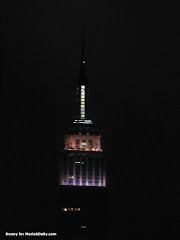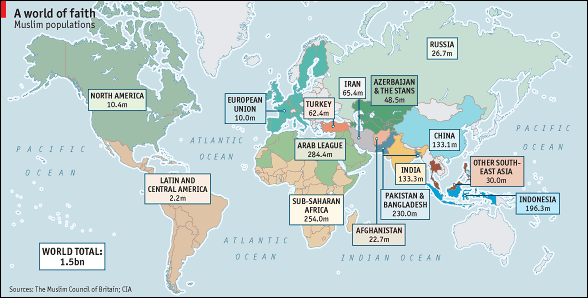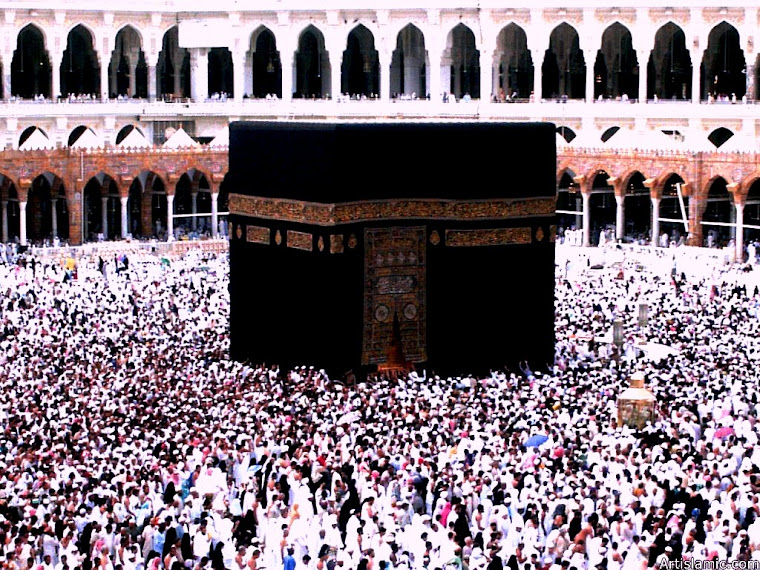A Brief Balik-Islam Introductory Situation in the Philippines
A Concise Look in the History of Islam in the Philippines
Islam spread in the Philippines from the 13th century through the 1500's. The people combined Islam with their own practices and beliefs. Muslims founded communities (called sultanates) with the chief of each community (sultans). Muslim sultans in the Southern Philippines went with a fleet to northern islands for slaves to bring back to Sulu province. Once the slaves were integrated into the community, they were encouraged to marry Muslim Moros of the south so children could acquire freedom.[6]
What are you investigating? Why?
IV ---> DV
Relationship between full-fledged
Muslims and Balik-Islam is intact ---> Islam
and that conflicts scarcely happen.
The researcher would like to find out if:
- And there’s a social perceptive difference between random selected Muslims and balik-Islam, wherein 10 persons represent each group.
What have others done within the subject area?
Discussions to Answer the Posited Research Problem
- Tawhid (Divine Unity) means monotheism as opposed to the polytheism of the pre-Islamic Arabs. The ulama (Muslim scholars) link Tawhid with Shari’ah-centric piety (Islamic laws). But to Sufis (Mystic Muslims), Tawhid means the ultimate non-existence of anything except Allah (God).
Ø Cana expressed that as a Muslim it is obligatory to continuously seek knowledge as it was said by Prophet Muhammad (peace be upon him) that “seek from cradle to graveyard.” While Salam stated that the strength of Iman (faith) is the best weapon of anyone to use to know exactly the purpose of creation... without faith every religion comes to an end. He even asserted that those who chose to adopt the modern way is due to lack of faith and knowledge.
- The doctrines of Tawhid are expressed in Shaha’dah (Profession of Faith) declaring that “There is no (other) God but (one) God,” zakat (annual ¼ legal alms of your wealth to the poor), salat (praying five times a day, every dawn, midday, afternoon, sunset and after darkness falls facing at the Qiblah or the Ka’bah direction), Ramadan (fasting for cleansing of souls and sins), and, if practical (financially and physically capable), at least one hajj (pilgrimage to Mecca to visit Ka’bah, the house of God).
Ø Cana described a true Muslim, whom s/he must practice the five (5) pillars of Islam, six (6) articles of faith and avoid doing bad things which are considered forbidden in Islam. This is also congruent to Salam responses.
- Ilm (Islamic system of knowledge) emphasizes the interconnectedness of the Qur’anic values of khalafa (trusteeship), adl (justice) and istislah (public interest) for the pursuit and promotion of equality, social justice and positive moral and ethical values for all men.
Ø Since the researcher test their knowledge about Islam, I asked Cana about hereafter, and he abruptly said that the Holy Qur’an under Sunah Al-Kahl (chapter 18 verses 107 to 108), “verily those who believed on oneness of Allah (Islamic monotheism) and righteous deeds shall have the garden of Al-Firdaus (paradise) for their entertainment (18:107), wherein they shall dwell (forever). No desire will travel for removal there from (18:108). While Salam is very flowery in responding, he said that to oppose threat, always believed God as the creator and taking this away form Him is a blasphemous punishment.
- zahir(outer)-batin(inner) axiom, according to Sufi beliefs, the zahir of the Qur’an (Islam’s holy book) addresses the regulation of physical behavior while its batin meaning is concerned with the quest for the internal meaning of man’s relationship with Allah.
Ø Both of the correspondents can be indirectly categorized as Sufis (beliefs in Islamic mysticisms) for Cana stating that he seeks refuge to Allah from the saitan. and that a true Muslim has nothing in mind to be converted to other religion as Islam is the only religion accepted by Allah.
- The promotion of Dar-al-Islam (Space of Peace and Justice) and prevention Dar-al-Harb (Space, Corruption and Injustices).
Ø They both expressed Dar-al-Islam and Salam said that Islam teaches simplicity which covers all spheres of life. Its basic teaching is the unity of lordship caters all faith without resistance. And literally defined the etymological meaning of Islam which originated from the Arabic word Salama which means peace or guarantees peace in relation with our creator.
Five (5) questions given to Muslim regarding balik-Islam:
1. Are balik-Islam can be categorize as good reverts?
Ø All of the 10 Muslims answered YES.
2. Did you have any balik-Islam friends?
Ø All of the 10 Muslims answered YES.
3. Did you encounter any devout balik-Islam?
Ø All of the 10 Muslims answered YES.
4. Do you believe that balik-Islams are terrorists, just like what the media portrays?
Ø All of the 10 Muslims answered NO.
Ø 5 Muslims answered YES while the other half answered NO.
1. Are all Muslims can be categorize as practicing Muslim?
Ø All of the 10 balik-Islam answered YES.
2. Did you have any Muslim friends?
Ø All of the 10 balik-Islam answered YES.
Ø All of the 10 balik-Islam answered YES.
Ø All of the 10 balik-Islam answered NO.
Ø All of the 10 balik-Islam answered YES.
Which part of that body of knowledge your paper will be added to?
Primary Sources
- Questionnaires answered by Muhammad Cana and Abdul Salam. This has 11 questions each.
- A survey questionnaire from 20 correspondents, Muslim and Balik-Islam groups comprises of 10 persons each. This has only 5 questions each with similar content but differ in the letter head based on the concern correspondent whether Muslim or balik-Islam.
Secondary Sources
Book
Oddie, G. A. Religion in South Asia: Religious Conversion and Revival Movements in South Asia in Medieval and Modern Times. London: Curzon Press, 1977.
Sakili, Abraham P. Space and Identity: Expressions in the Culture, Arts and Society of the Muslims in the Philippines. Quezon City: Asian Center, University of the Philippines, 2003.
Thesis
Moh. Siddique, Abdel-Azeem A. “Balik-Islam: Religious Reversions, Identity Changes and Challenges.” MA Thesis. Institute of Islamic Studies. University of the Philippines, Diliman, April 2005.
Monograph in Online Article
Angeles, Vivienne SM. “From Catholic to Muslim: Changing Perceptions of Gender Roles in a Balik Islam Movement in the Philippines.” La Salle University (Women Studies). Philadelphia, PA. USA
URL source: http://209.85.175.104/search?q=cache:ghEhjvt5AtAJ:www.euroseas.org/2007/documents/ateliers/euroseas_38_545.doc%3FPHPSESSID%3D0d93ca1b219aa5e6759fe12711f56959+balik-Islam&hl=en&ct=clnk&cd=14
[2] Also, in the study done by Vivienne Angeles, her major source of information is the women’s conversion narratives which came out of interviews conducted with women who belong to the Islamic Studies Call and Guidance, a Balik Islam group.
[3] Abdel-Azeem A. Moh. Siddique on his thesis about Balik-Islam.
[4] Ibid.
[5] Taken from the monograph of History of Islam in the Philippines with an URL source at
[7] Ibid.
[8] Ibid.
[9] Ibid.



















No comments:
Post a Comment